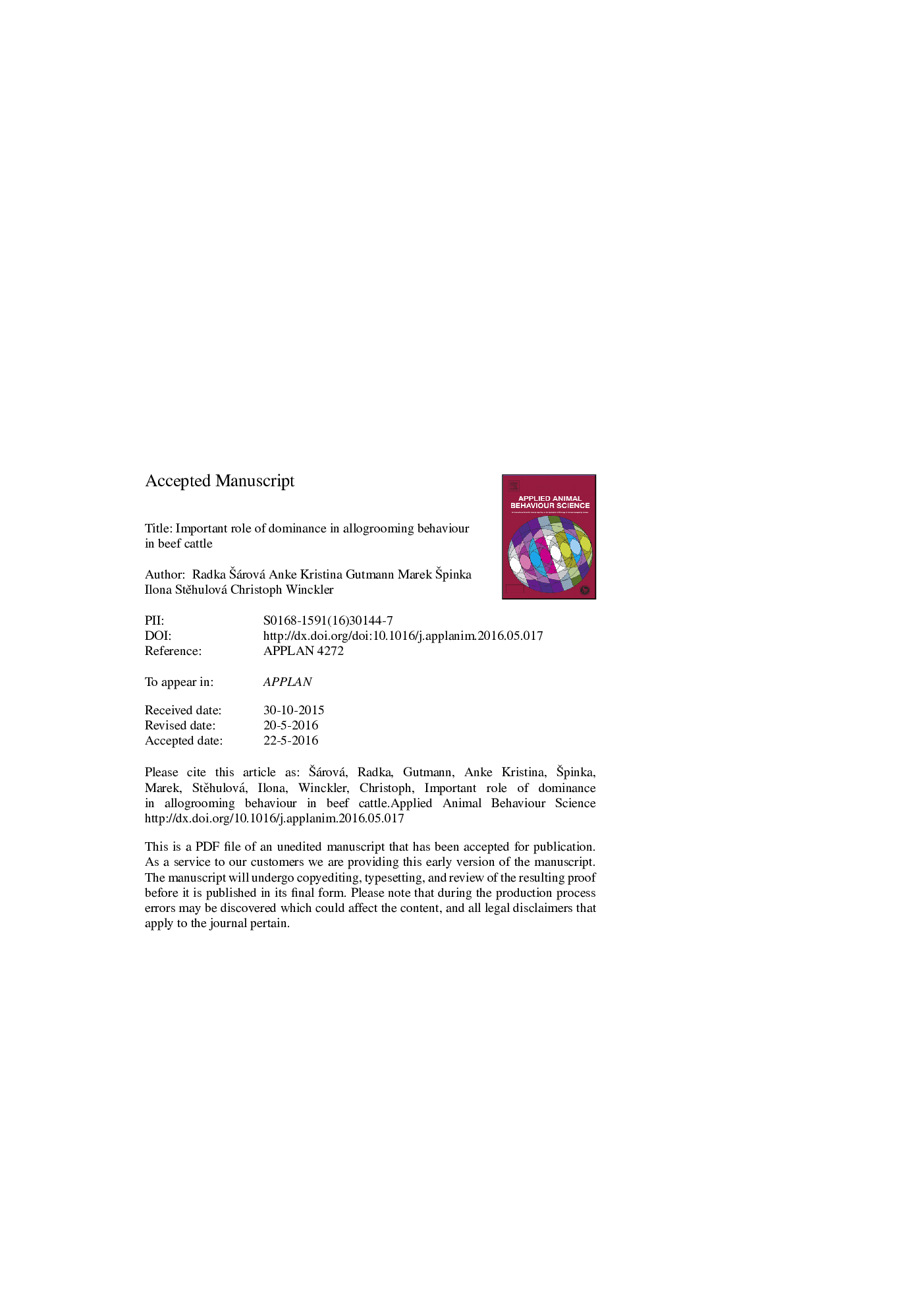| کد مقاله | کد نشریه | سال انتشار | مقاله انگلیسی | نسخه تمام متن |
|---|---|---|---|---|
| 6379287 | 1625325 | 2016 | 35 صفحه PDF | دانلود رایگان |
عنوان انگلیسی مقاله ISI
Important role of dominance in allogrooming behaviour in beef cattle
ترجمه فارسی عنوان
نقش مهم تسلط در رفتار همه جانبه در گاو گوشتی
دانلود مقاله + سفارش ترجمه
دانلود مقاله ISI انگلیسی
رایگان برای ایرانیان
کلمات کلیدی
گاو گوشت گاو، تمام شدن، سلسله مراتب اجتماعی، سلطه متقابل، تجزیه و تحلیل شبکه شبکه،
موضوعات مرتبط
علوم زیستی و بیوفناوری
علوم کشاورزی و بیولوژیک
علوم دامی و جانورشناسی
چکیده انگلیسی
In domestic cattle, the relationship between dominance and allogrooming behaviour has been investigated in several studies. However, the results do not show a consistent pattern. The aim of this study was to investigate this relationship in a stable female beef cattle herd using social network analysis as a novel methodological approach. We tested two adaptive allogrooming hypotheses. The 'Grooming-for-Commodity' hypothesis posits that allogrooming is directed from low ranking animals towards higher ranking cows in exchange of tolerance and other favours. The 'Grooming-for-Stability' hypothesis predicts that allogrooming is performed by high ranking animals down the hierarchy in order to perpetuate the stability of the social structure. We recorded a herd of 15 Gasconne cows on pasture for 3 weeks (180 h) and recorded 681 agonistic interactions and 288 allogrooming events. To evaluate the relationship between dominance and allogrooming behaviour we calculated correlations between dominance index, individual behavioural effort (OUT-direction), and individual attractiveness (IN-direction). We found that more dominant animals provided much higher amount of allogrooming acts (p < 0.001) and groomed more herdmates (p < 0.001). As a consequence, allogrooming behaviour was mostly oriented down the hierarchy (p < 0.001). At the same time, more dominant animals also received higher total number of allogrooming (p < 0.05). This seeming paradox was due to the fact that the very active high ranking allogroomers exchanged a lot of the licking with each other. Further, the dominance index of the cow was or tended to be positively related to the social network analysis measures of IN-Dyad-Reciprocity (p = 0.065), IN-Betweenness (p < 0.05) and OUT-Dyad-Reciprocity (p < 0.001). Our study showed that the more dominant animals have more prominent roles in the allogrooming network of a stable female beef cattle herd. These results give more support to the 'Grooming-for-Stability' hypothesis than to the 'Grooming-for-Commodity' hypothesis.
ناشر
Database: Elsevier - ScienceDirect (ساینس دایرکت)
Journal: Applied Animal Behaviour Science - Volume 181, August 2016, Pages 41-48
Journal: Applied Animal Behaviour Science - Volume 181, August 2016, Pages 41-48
نویسندگان
Radka Å árová, Anke Kristina Gutmann, Marek Å pinka, Ilona StÄhulová, Christoph Winckler,
